Vol. 9, Issue 2, pp: (237-250), Month: October 2021 - March 2022, Available at: www.researchpublish.com
Psychosocial implication Of Substance Abuse on the families of Long-Distance Drivers, Families and Societies in Iwo, Osun State
Kamoru .A Adesina1 , RN, RPON, Msc, Dr Lasebikan1Osun State University Osogbo
2Psychiatrist, University college Hospital, Ibadan
2 , O.A,
Abstract: The Psychosocial implications of substance abuse on long distance drivers, families and society in Iwo Local Government garages of Osun state were studied to identify various substances of abuse, where they were often procured, how they were abuse and the common routes of administration.
Interviews and questionnaire were used to elicit detail information from the respondents. The result of the study showed that larger percentage of the respondents were growing adults of age range 25-35 years. Poor parenting and broken homes are largely responsible for early exposure of most respondents to substance use and abuse.
Among the legal drugs, alcohol and cigarette were the most commonly abuse while marijuana (Indian hemp) top the category of illegal substance that is often abused due to the cost and non-availability of others like cocaine and heroine. The study also discovered multiple drug use in most drivers. Psychosocial implications of substance abuse were also discovered.
These ranges from neglect of personal hygiene, family disruption, broken homes avoidable accidents and problems with the law enforcement agents. It was also discovered that, there is no enabling law or edict prohibiting hawking, sales and consumption of substance of abuse in motor garages and if such law ever exists, it is not enforced as substance of abuse were seen freely exchanging hands in these garages. And that is why peer group influence was so strong in the ways by which they are introduced to these drugs. Other reason according to the study is frustration due to bad economy in the country.
Lastly, there is dearth need of information on the relationship of substance abuse and driving, further study is therefore needed in other local government areas and states to help government formulate definite pronouncement that will prohibit hawking, sales and consumption of substance use in garages nationwide.
Keywords: Substance abuses Psychosocial implication long distance drivers, society and families.
1. INTRODUCTION
People in almost all cultures have used psychoactive substances since prehistoric times. Drug abuse is generally common in Nigeria and other developing countries but commoner among long distance commercial and truck drivers. These substances/drugs have been seen as enhancers of individual and social functioning. People continue to use them for relief of negative emotional states, such as depression, fear, anxiety, relief from fatigue or boredom and as a break from daily routines through altered states of performance. Alcohol and as major drug raw materials like kola also contribute in various religious ceremonies. Ethical and Legal considerations aside, moderate use for any of these purposes would probably not result in major social or individual harm. However, all cultures have recognized the negative effects of alcohol and drug use. Excessive use of these substances has contributed to profound individual psychological and social
International Journal of Healthcare Sciences ISSN 2348-5728 (Online)
Vol. 9, Issue 2, pp: (237-250), Month: October 2021 - March 2022, Available at: www.researchpublish.com
problems. Any drug/substance that can produce pleasurable changes in mental or emotional states has potential for abuse. Drug that cause the most marked and immediate desirable effects have the greatest abuse potential. Alcohol and cocaine are very pop ular because they produce effects on the brain within minutes.
Drugs of abuse include legal drugs such as alcohol and illegal drugs like heroin, cocaine and marijuana and household products such as inhalants. Long distance drivers often use these drugs initially to keep them awake and alert to cope with the stress of long distant driving, but gradually the use turns to abuse and finally to dependence. The substances commonly abused by these drivers are majorly alcohol and marijuana and in some cases multiple substance use is not uncommon. Simultaneous or sequential use of more than one substance is very common. Drivers do this to enhance, lessen, or otherwise change the nature of their intoxication or to relieve withdrawal symptoms. Use of alcohol with marijuana is especially common among these drivers and their own use is commoner nowadays than any other group in the society. It is on daily basis as corroborated by Aguwi in 1998 that there is no single day that passes without any prescription from the physician, doctors or pharmacologist, it is abuse or misuse of drugs that is causing harm and concern.
Users of intravenous drugs and their sexual partners are at high risk of infections with blood borne pathogens particularly hepatitis B (HBV) and the Human Immune Deficiency Viru+s (HIV), which causes the acquired immunodeficiency syndrome (aids). It is common for addict to share needles when they are using drugs in a group. Because the needles are not cleaned, blood is transferred from one person to the others. This is an ideal situation for the transmission of HIV and HBV.
It is the recent increase in number of long distance drivers acquiring HIV/AIDS, being involved in fatal accidents, resulting from over excitement or speeding and dosing off, and many derailments from roads and bridges with their attendant consequences of injuring, maiming and killing of innocent individuals and infecting their innocent spouses with debilitating and deadly diseases that prompted me to choose this topic and it is hoped that the work will goIt is the recent increase in number of long distance drivers acquiring HIV/AIDS, being involved in fatal accidents, resulting from over excitement or speeding and dosing off, and many derailments from roads and bridges with their attendant consequences of injuring, maiming and killing of innocent individuals and infecting their innocent spouses with debilitating and deadly diseases that prompted me to choose this topic and it is hoped that the work will go is the recent increase in number of long distance drivers acquiring HIV/AIDS, being involved in fatal accidents, resulting from over excitement or speeding and dosing off, and many derailments from roads and bridges with their attendant consequences of injuring, maiming and killing of innocent individuals and infecting their innocent spouses with debilitating and deadly diseases that prompted me to choose this topic and it is hoped that the work will go along way in creating desire awareness among drivers in general and particularly the long distance ones, and also sensitize the government on ways to reduce untimely deaths emanating from the wholesome acts.
2. STATEMENT OF THE PROBLEM
Between 1982 and 1996, the Federal Road Safety Corps reported that over four hundred and thirty-nine thousand, one hundred and eighty-two (439,182) were casualty in road traffic accidents. Of this figure, one hundred and sixteen thousand, five hundred and sixty-one (116,561) were killed while the remaining three hundred and twenty-two thousand, six hundred and twenty one (322,621) sustained one form of injury or the other ranging from minors like bruises and abrasions to major ones like crushed injuries, at times to 2, 3 or the four limbs necessitating amputations, and spinal cord injuries.
Most studies on psychoactive substance use have been hospital based and may not be representative of the population. There is a need therefore for more community based studies, particularly among commuter drivers and among people who would otherwise not present to the clinics. Moreover it has been reported that those who take up menial jobs in the community, in market places and at motor parks are vulnerable to psychoactive substance use (Nevadomsky, 1982; Obot, 1993; NDLEA Publication, 1993).
Psychoactive substances use has been found to be on the rise and this has been blamed on inconsistent legal policies (Odejide, 199 and 1998) and there are too few community based studies that can be used to guide policy markers.
International Journal of Healthcare Sciences ISSN 2348-5728 (Online)
Vol. 9, Issue 2, pp: (237-250), Month: October 2021 - March 2022, Available at: www.researchpublish.com
It is evident from personal observation that there is no control on the use and sale of alcohol and some other psychoactive drugs in our motor parks. Furthermore there is a dearth of information on psychoactive substance use and road traffic accidents in Nigeria.
These therefore give an impetus for this study to determine the psychosocial implication of substance abuse on long distance drivers, their families and the society, and to advise relevant agencies accordingly.
SUB-PROBLEM
- To identify factors responsible for substance abuse amongst long distance drivers.
- To determine the substance that is commonly abused by long distance drivers.
- To determine the relationship between substance abuse by the drivers and accidents on our roads.
RESEARCH QUESTIONS
This study attempts to answer the following questions.
1. What are the factors responsible for high incidence of substance abuse among long distance drivers?
2. What psychosocial implications have substance abuse on long distance drivers, their families and the society?
SIGNIFICANT OF THE STUDY
It is hoped that the study will serve as an important tool for the road safety personnel, government, health and social workers to map out strategies to:
- Formulate policies that will eradicate hawking of substance that would be abused in our garages.
- Determine health hazards inherent in substance abuse and long distance driving.
- Affords law enforcement agents, drivers and social workers opportunity to prevent prospective drivers form substance abuse
- Providing strategies in public relations to create awareness in communities to pretest drivers before embarking on their journey.
3. THEORETICAL FRAME WORK
The frame work to be used for this study are psychological and socio cultural theories.
PSHYCHOLOGICAL ; Many psychological theories have attempted to explain the factors that predispose people to substance abuse. Psychological theories are alcoholic as fixated at the oral stage of development, thus seeking need satisfaction through oral behaviour such as drinking. Behaviour or learning theories view addictive behaviours as over learned, mal adaptive habits that can be examined and changed in the same way as other habits Family system theory emphasizes the pattern of relationships between family members through the generations as an explanation for substance abuse
SOCIOCULTURAL
Several sociocultural factors influence a person choice whether to use the drugs, which drug to use, and how to use. The attribute, values, norms and sanctions differ according to nationality, religion, gender, family background, and social environment.
Assessment of these factors is necessary to understand the whole person. Combination of factors may make a person more susceptible to drug abuse.
Formal religious belief can also affect drinking behaviours. Members of religious that discourage the use of alcohol use and alcoholism than members of those that accept or encourage its use.
International Journal of Healthcare Sciences ISSN 2348-5728 (Online)
Vol. 9, Issue 2, pp: (237-250), Month: October 2021 - March 2022, Available at: www.researchpublish.com
STUDY OF DESIGN AND SCOPE
This study is a descriptive, cross sectional study. The nature of the research is exploratory and the variables of interest are socio-demographic correlates of drug users, pattern use in terms of single or multiple use, associated psychosocial effect like family disruption, drug use and work, drug use and road accidents, and attendant consequences, problems with law enforcement agency.
STUDY OF POPULATION
The target population was long distance commercial drivers working in all motor parks in Iwo. Two hundred [200] of these drivers were picked.
SAMPLE SIZE ESTIMATION
The sample size n was obtained from the formula.
n = Z2qr/d2 by Kish and Leslie (1965) where n = minimum sample size
Z = 1.96 (2S.D) at 95% confidence interval
P = probability that a driver will use a drug (0.5) q = 1- p
d = precision expected at 95% confidence limit (0.05)
n = n = 1.962 (0.5)(1- 0.5)/ (0.05)2 = 384
Rounded up to 400
Because of time lack of fund, 1/2 of this no. which is 200 will be used distribution to garages will be through the use of this sample calculation. 200n = 520 n = 520/200 n = 2.5
INSTRUMENT FOR DATA COLLECTION
The instrument used for data collection was a set of pre-coded open and closed ended question prepared in English. The question was divided into four sections, they are;
SECTION A; PATTERN OF DRUG ABUSE
SECTION B; SOCIO-DEMOGRAPHIC SECTION
SECTION C; PHYSICAL EXAMINATION
SECTION D; PSYCHOSOCIAL IMPLICATION OF DRUG USE.
RELIABILITY AND VALIDITY
The instrument was pretested for use in this study after it had been pretested among a sample of 20 commercial drivers from phoenix garage in Iwo. The garage is not to be used for the real study.
PROCEDURE FOR DATA COLLECTION
A letter of identification was taken from the department, copies of these were given to chairmen of these garages to solicit for their support. Two week’s notice was given to meet all the participants for administration and collection of questionnaire (A Vernacular of questionnaire was used for the purpose).
By this method, all the questionnaire administered were returned to the researcher.
International Journal of Healthcare Sciences ISSN 2348-5728 (Online)
Vol. 9, Issue 2, pp: (237-250), Month: October 2021 - March 2022, Available at: www.researchpublish.com
4. METHODS OF DATA ANAYLSIS
The questionnaire was serialized and information yielded by each questionnaire was entered directly into the computer using EPI-INFO 6 data programme[Dean et. al., 1991]
5. RESULT
5.1 Table 1: Frequency counts and percentages of the respondents according to age
0 0.5 1 1.5 2 2.5 3 3.5 4 4.5 age group
Table 1 reveals the distribution of the respondents by age. The result shows that 5.5% of the respondents are in age group 15-19years, 13.5% of the respondents are in age group 20-24years, 29% of the respondents are in age group 25-29years, 12.5% of the respondents are in age group 30-34years, 13% of the respondents are in age group 35-39years, 21% of the respondents are in age group 40-44years, 4.5% of the respondents are in age group 45-49years while 1% of the respondents are in age group 50years and above. This shows that majority of the respondents fell in age group 2529years.
5.2 Table 2: Frequency counts and percentages of the respondents according to Educational Status
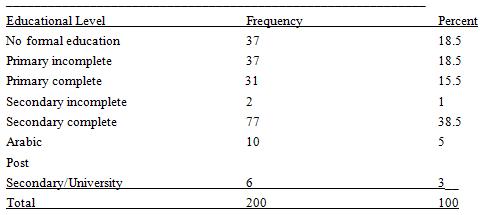

International Journal of Healthcare Sciences ISSN 2348-5728 (Online)
Vol. 9, Issue 2, pp: (237-250), Month: October 2021 - March 2022, Available at: www.researchpublish.com
Table 2 reveals the distribution of the respondents by educational status. The result shows that 18.5% of the respondents have no formal education, 15.5% of the respondents are had their elementary school completed, 18.5% of the respondents are had their elementary school uncompleted, 38.5% of the respondents are had their secondary school uncompleted, 5% of the respondents are had Arabic education, while 3% of the respondents had post secondary school certificate. This shows that majority of the respondents completed their secondary education.
5 3 Table 3: Frequency counts and percentages of the respondents according to ethnicity
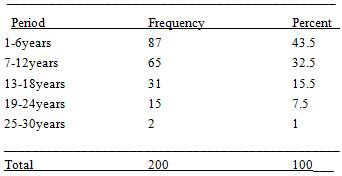

Table 3 reveals the distribution of the respondents by ethnic. The result shows that 10.5% of the respondents are Hausa, 7.5% of the respondents are Ibo, 81% of the respondents are Yoruba while 1% of the respondents are from other tribe (Tiv). This shows that majority of the respondents are Yoruba.
ethnic group
0 1 2 3 4 5 6 7 8 9 10
5 4 Table 4: Frequency counts and percentages of the respondents according to the time they have been in the garage.
Table 4 reveals the distribution of the respondents by their living arrangement. The result shows that 43% of the respondents had being in the garage between 1 to 6years, 32.5 of the respondents had being in the garage between 7 to 12years, 15.5% of the respondents had being in the garage between 13 to 18years, 7.5 of the respondents had being in the garage between 19 to 24years, while only 1% of the respondents had being in the garage between 25 to 30years. This shows that majority of the respondents are living with their parent.
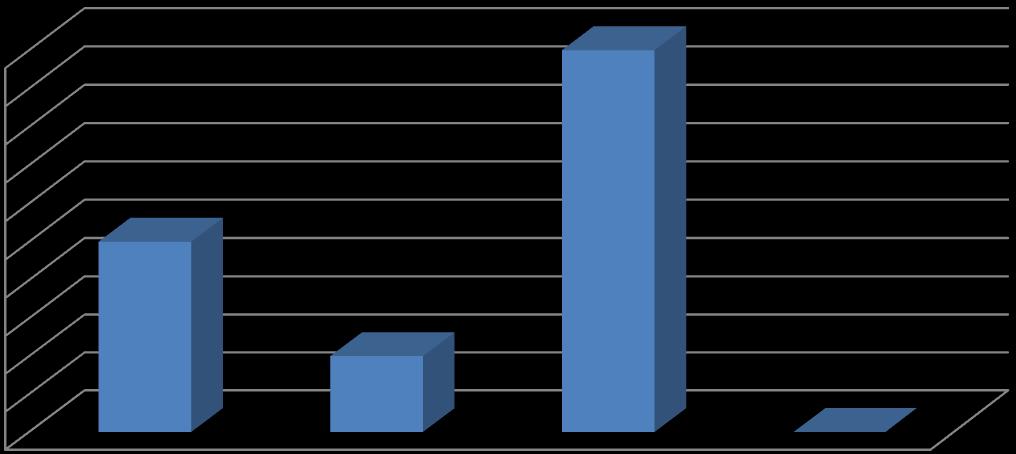
International Journal of Healthcare Sciences ISSN 2348-5728 (Online)
Vol. 9, Issue 2, pp: (237-250), Month: October 2021 - March 2022, Available at: www.researchpublish.com
periods
5.5 Tables 5: Frequency counts and percentages of the respondents according to the type of driver
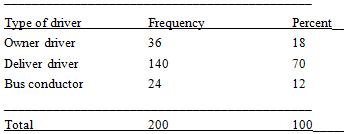
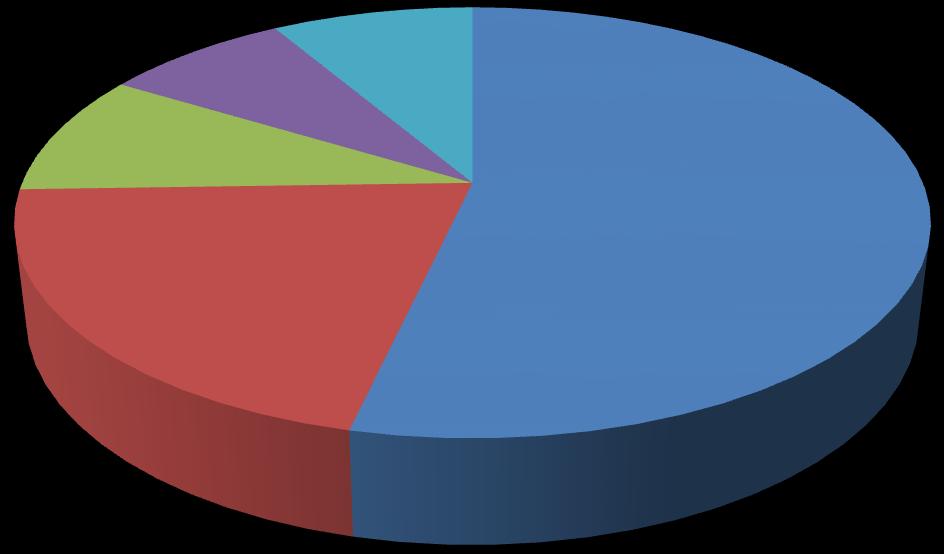
Table 5 reveals the distribution of the respondents by the type of driver. The result shows that 18% of the respondents are owner driver, 70% of the respondents are deliver driver, 24% of the respondents respondents are bus conductor.
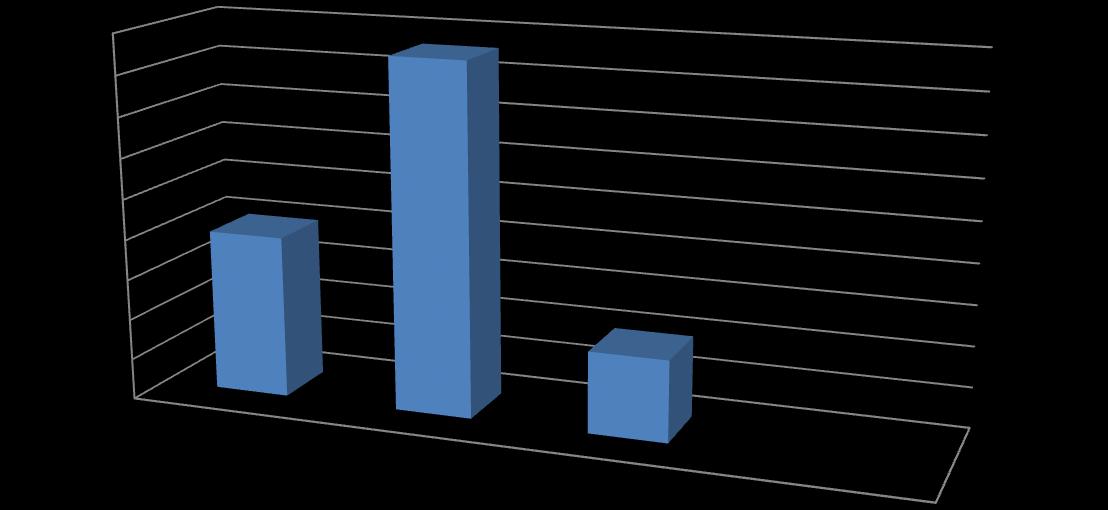
type of driver
owner driver deliver driver bus conductor
International Journal of Healthcare Sciences ISSN 2348-5728 (Online)
Vol. 9, Issue 2, pp: (237-250), Month: October 2021 - March 2022, Available at: www.researchpublish.com
5.6 Table 6: Frequency counts and percentages of the respondents according to how they find themselves in the job
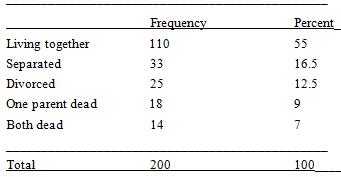
Table 6 reveals the distribution of the respondents by how they find themselves in the job. The result shows that 36.5% of the respondents involved in the job wishfully, 40.57% of the respondents are involved due to no job, 23% of the respondents are involved through friends.
getting themselve in the job
0% 10% 20% 30% 40% 50% 60% 70% 80% 90% 100%
wishful job out of no job through friend
5.7 TABLE 7: Frequency counts and percentages of the respondents according to the situation in their homes during their early life.

Table 7 reveals the distribution of the respondents by the situation in their homes during their early life. The result shows that 55% of the respondents were living together with their parents, 16.5% of the respondents ere having their parents separated, 12.5% of the respondents were having their parents divorced, 9% of the respondents had one parents dead, while 7% of the respondents had their parents dead.
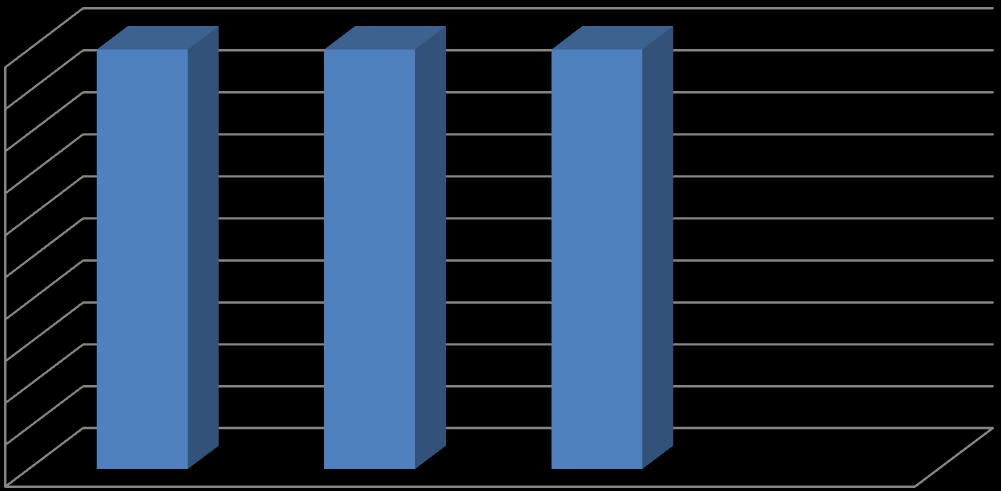
International Journal of Healthcare Sciences ISSN 2348-5728 (Online)
Vol. 9, Issue 2, pp: (237-250), Month: October 2021 - March 2022, Available at: www.researchpublish.com
situation at home
DRUG BEING COMMONLY ABUSED AND ITS EFFECTS
Drugs normally taken regularly
Drugs Frequency Percent Valid Percent Cumulative percent cigarette alcohol marijuana kolanut snuff coffee albukun Total
32 57 57 18 13 8 15 200
16.0 28.5 28.5 9.0 6.5 4.0 7.5 100.0
16.0 28.5 28.5 9.0 6.5 4.0 7.5 100.0
16.0 44.5 73.0 82.0 88.5 92.5 100.0
The study has shown that the most widely used socially acceptance substance is alcohol, while the most widely used illegal substance is marijuana. Similar findings were reported by Kaplan et al. (1994) in the United States of America, Hawk (1978) and Plant et al. (1982) in Europe. The study findings confirm what was reported by Adelekan et al. (1992 and earlier by Abiodun (1991)) both in Nigeria. Alcohol is widely available in this community and there are no prohibitive laws limiting sales to certain times of the day as to minimize consumption as they have in the United Kingdom.
That significantly more drug users gave a history of drug use in their family compared with non users in this study is not surprising. Nevadomsky (1982) had reported that individuals who use drugs provide poor role modeling their children. Similar reports were made in ICAA Publication in 1988, in the NDLEA publications (1992), Adelekan (1993), and by Obot (1993). These children may actually help their parents purchase some of the widely available drugs.
The present study has also shown that significant more drivers got introduced to these substances through peers and fathers. Authors like Obot (1993) in Nigeria had made similar reports before, and attention needs to be paid to these areas developing a drug awareness and rehabilitation programme for long distance drivers and their families.
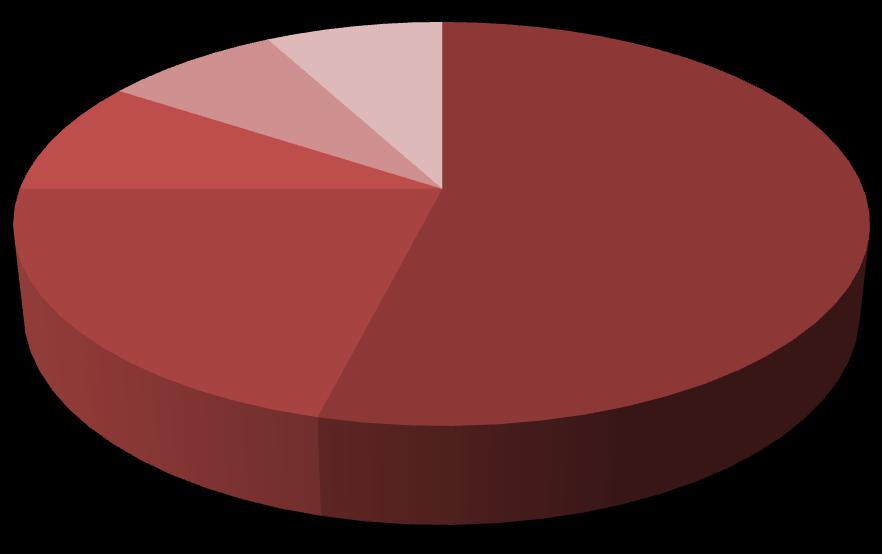
6. CONCLUSION
The present study assessed the Psychosocial implication of substance abuse on long distance drivers in selected motor parks in Iwo Local Government area of Osun State. The study has demonstrated that the majority of these drivers are young adults whose ages were between 25 and 35.
living together separated divorced one parent dead both dead
International Journal of Healthcare Sciences ISSN 2348-5728 (Online)
Vol. 9, Issue 2, pp: (237-250), Month: October 2021 - March 2022, Available at: www.researchpublish.com
Most of the respondents who use drugs got introduced to it through peer effect and frustration. Also the study has shown that physical disorders were significantly common in these drug users common in these drug users compared with nonusers.
Based on the above findings, the following recommendations are made:
1. Commercial drivers need to have educational programme to improve their awareness and knowledge of psychoactive substances.
2. Commercial drivers need to be screened for drug use as most commuters are ignorant of the fact that commercial drivers use ‘’drugs’’ and most commuters still depend on them to move around.
3. The law enforcement agencies need to be aware that commercial drivers need continous scrutiny as most of their dangerous driving habit may be as a result of drug use.
4. The government need to ban the sale of psychoactive substances in and around the motor parks and enforce such action.
5. The Government needs to discourage the advertisement of alcohol and other ‘’drugs’’ of abuse.
6. There needs to be public enlightenment programmes in order to educate people on the health hazards of these drugs.
7. Government needs to build primary health centers inside these motor parks to facilitate regular medical checkup by the commercial drivers to rule out substances abuse before driving.
8. Law Enforcement agents should mount check points at intervals on roads to examine drivers for substances abuse.
9. There is a need for future studies in this area. There is a death of information on drugs use among commercial drivers and this has posed a lot of limitations on this study. Studies in this area will help in future health planning and management.
REFERENCES
[1] Abel, E.L. 1984: Fetal alcohol syndrome and fetal alcohol effects. New York. Plenum Press.
[2] Abiodun, O.A. 1991: Knowledge and views on drug abuse of primary health care workers in. Nigeria: Drug Alcohol Dependent.28.7:177-182
[3] Adelekan, M.L. 1996: The epidemiology and social contents of Amphetamine and psychostimulant use in Nigeria. Paper presented for WHO (PSA) meeting, geneva 1966
[4] Adelekan, M.L et.al. 1992:Prevalence and pattern of substance use among undergraduates in Agbahowe, S.A; Ohaeri, J.U. Ogunlesi, A.O; Osahon, R. 1998: Prevalence of psychiatric morbidity among convicted inmates in a Nigeria prison community. East African Madical
[5] Akindele,M.O. 1976: Students and drugs. Ghana Medical Journal 9:184-187.
[6] Anderson, H.R. 1982: An investigation of 140 deaths associated with volatile substance abuse in the United Kingdom: Human Toxicology, 1:207-21.
[7] Anumonye, A. 1980: Drug use among young people in Lagos, Nigeria. Bulletin on Narcotics, 32.4:30-45.
[8] Asogwa S.E. 1978: Road traffic accident: A major public health problem. Public Health, (London) 92:237-245.
[9] Asogwa, S.E. 1992: Road traffic accidents in Nigeria: A review and a reappraisal. Accident and Prevention. 24:149155.
[10] Asuni, T. 1964: Socio-psychiatric problems of cannabis in Nigeria. Bulletin on Narcotics; 16.2
[11] Asuni T. 1992: Drug trafficking and drug abuse in Africa: Criminology in Africa (Rome: UNICRI).
[12] Bankole, O 1999: Effect of drugs on Nigerian Youth. Nigeria Tribune.February 7th 1999:14
[13] Beaubrum, M.H and Knight, F. 1973: Psychiatric assessment of 30 chronic users of cannabis and 30 matched controls. American Journal of Psychiatry 130:309-311.
International Journal of Healthcare Sciences ISSN 2348-5728 (Online)
Vol. 9, Issue 2, pp: (237-250), Month: October 2021 - March 2022, Available at: www.researchpublish.com
[14] Boor, J.W. and Hurtig, N.I. 1977: Persistent cerebuller ataxia after exposure to solvent. Annals of Neurology. 2.440442.
[15] Briegar, W.R. and Adeniyi, J.D. 1982: Urban community health education in Africa. Int. Quart. Comm. Health Educ. 2:109-121.
[16] Campbell, A.M.G. et al. 1971: Cerebral atrophy in young cannabis smokers. Lancet 2:1219-1224.
[17] Edwards, G.; Hensman, C. and Peto, J. 1971: Drinking problems among recidivist prisoners. Psychological Machinel, 1:388-389.
[18] Gardner, R. 1970: Deaths in United Kingdom Opoiold Users 1965-69. Lancet 2:680-683.
[19] Gelder, M.; Gath, D.; Mayou, R. 1989:. Alcohol and other psychoactive substance abuse. Oxford Textbook of psychiatry. London , Oxford University Press.
[20] Goldberg, D.P. 1972: The detection of psychiatric illness by questionnaire. Monography, 21:220-224
[21] Goldberg, D. and William, P. 1988: A users guide to the General Health Questionnaire. London: NFER-Nelson,
[22] Gureje, O. Obikoya, B.; Ikuesan, B.A 1992: Alcohol abuse and dependence in an urban primary care clinic in Nigeria.: Drug Alcohol Dependence. 30.2:163-167.
[23] Haight, F. 1980: Traffic safety in developing countries. Safety Res. 12.12:50-55.
[24] Hanson, J.W.; Jones, K.L. and Smith, D.W. 1976: Fetal alcohol syndrome an experiment with 41 patients. Journal of the American Medical Association.
[25] Harvard, J.D.J. 1977: Alcohol and road accidents in Alcoholism; New Knowledge and New Response. Groom elmLondon.
[26] Hawson, C.P.; Harrison, P.F.; Horta, D. and Law, M. 1996: Injuries: in her life time. Femall Mabewty and maternity in sub-savannah Africa. Nature Washington, D.C Academy Press.
[27] ICAA Publication 1988: Report of a research project on substance abuse in some urban and rural areas of Nigeria. LAUSANE.
[28] Ifeniyi, O. (1991) Leukoketatosis nicotinaca/tobacco/snuff and tobacco smoking precancerous and malignant potentials: Dentiscope 4
[29] Imade, A.G and Ebie, J.C. 1991: A retrospective study of symptoms patterns of cannabis induced psychosis. Acta Psychiatrica.83.2
[30] Jacob, G.O and saye,I. 1983 Road accident in developinp countries. Accid Prev. 15 337_353
[31] Jones, K and smith, D.W 1993 Recognition of the fetal alcohol syndrome in early infancy. Lancet. 2:1999-2001.
[32] Kadiri, S.; Walker, O.; Salako, B.L.; Akinkugbe, O. 1999: Blood pressure, hypertension and correlates in urbanized workers in Ibadan, Nigeria: A revisit. Journal of Human Hypertension. 13. :23-27.
[33] Kaplan, H.; Sadock, B and Grebb, J. 1994: Psychoactive substance use disorders. Synopsis of psychiatry 7th edition.
[34] Kessel, N. 1977: The foetal alcohol syndrome from the public health stand point. Health Trends. 9:86
[35] Kish and Leslie, 1965: Survey sampling. New York, John Willey and Sons.
[36] Klapper 1960: Cited in drug use and abuse; facts, consequences and remedies A.O. Odejide 1998: A paper presented at the Development Policy Centre.
[37] Kleinbaum, D.G.; Kupper, L.C. 1979: Applied regression analysis and other multivariate methods.
[38] Korobkin, R., et al. 1975: Glue-sniffing neuropathy. Archives of Neurology 32:158-162.
[39] Lambo, T.A. 1960: Medical and social problems of drug addiction in West Africa with emphasis on psychiatric aspect. Bulletin on Narcotics. 17.1
International Journal of Healthcare Sciences ISSN 2348-5728 (Online)
Vol. 9, Issue 2, pp: (237-250), Month: October 2021 - March 2022, Available at: www.researchpublish.com
[40] Lambo T.A. 1960: Medical and social problems of drug addiction in West Africa with special emphasis on Psychiatric aspect. Bulletin on Narcotics 19.1
[41] Lasebikan, O.A. 1998: Study on pattern of Psychoactive substance use among commercial drivers in Ibadan. 115116.
[42] Lee, D.; Joseph, E.M.; Pontell, J. Turk, J.B. 1999 Apr. Long term result of dermal grafting for the of nasal septal perforations. Otolaryngology- Head and Neck Surgery. 120.4: 483-486,
[43] Lerer, L.B. Matzopolors, R. 1996: Meeting the challenge of railway injury in a South Africa city. Lancet. 348.9028:664-666.
[44] Lishman, N.A.M.; Ron, M. and Ackorn 1980: Computed tomography of the brain and psychometric assessment of alcohol patient. A British study in Addiction and Brain Demand (Ed. D. Ricjter ) London. Croom Helm.
[45] Maletyky, B.M. 1976: The diagnosis of pathology intoxication. Journal of Studies on Alcoholism. 37: 1215-1220.
[46] Murray, R.M. 1976: Characteristics and prognosis of alcohol doctors. British Medical Journal. 2:1527-1529.
[47] National Drug Law Enforcement Agency NDLEA Publication :1992-1993: Drug data report. Drug Data Collection Division of the drug Demand Reduction Unit.
[48] National Household Survey of Drug Abuse 1991: Cited in Synopsis of psychiatry by Kaplan and Saddock United States.
[49] Ndom, R.J.; Adelekan, M.I. 1996: Psychosocial correlates of substance use among undergraduates in Ilorin University, Nigeria. East Africa Medical Journal. 7.398:541-547.
[50] Nevadomsky, J. 1982: Self reported drug use among secondary school student in two rapidly developing Nigeria towns. Bulletin on Narcotics. 34:21-32.
[51] NRC (National Research Council) 1985: Injury in America; A continuing health problem Washington DC: National Academy Press.
[52] ODEJIDE, A.O and Ohaeri, J.U. 1993: Drug related admissions in 28 mental health institution in Nigeria In 1989. Commissioned study by the Federal Ministry of Health. Published in Drug and Alcohol Dependence 31.101-109.
[53] Odejide, A.O.; Ohaeri, J.U.; Adelekan, M.L. and Ikuesan, B.A. 1987 Drinking behavior and social changes among youths in Nigeria. A study of two cities. Drug and Alcohol Dependence. 20:227-233.
[54] Odejide, A.O. and Sanda, A.O. 1976: Observation on drug abuse in Western Nigeria. African Journal of Psychiatry. 5.1:21-29.
[55] Odukoya, O.; Roberts, T. and Arole, G. 1990: Admissions for drug and alcohol related problems in Nigeria psychiatric care facilities in one year. Drug and Alcohol Dpendence 31:101-109.
[56] Olubuyide, I.O. and Bamgboye, E.A. 1990: A case control study of the current role of cigarette smoking and alcohol consumption in primary liver cells carcinoma in Nigeria. Afr. J. Med. Sci. 19.3:191-194.
[57] Obasahon, A.O.; Ajuyah, C.O. 1990: How common is heart failure due to systemic hypertension alone in hospitalized Nigerians? Journal of human Hypertension. Vol. 10, No. 12, Pp. 801-804.
[58] Obot, I.S. 1990: The use of tobacco products among Nigeria Adults: A general population survey. Drug Alcohol Depend. 26.2:203-208.
[59] Obot, I.S. 1992: Ethical and legal issues in the control of drug abuse and trafficking: The Nigeria case. Soc. Sci. Med. 1.4:481-493.
[60] Obot, I.S. 1993: Drinking behavior and attitudes in Nigeria: a general population survey in the middle belt. Research Monography (Jos: Centre for Development Studies, University of Jos).
[61] Odejide, A.O. 1995: Control of drug trafficking and drug abuse. The role of the NDLEA. Nigeria Journal of Policy and strategy 10.1:51-72.
International Journal of Healthcare Sciences ISSN 2348-5728 (Online)
Vol. 9, Issue 2, pp: (237-250), Month: October 2021 - March 2022, Available at: www.researchpublish.com
[62] Odejide, A.O. (1998) Drug use and abuse: Facts, consequences and remedies. Paper presented at the Development Policy Centre, Sept 1998.
[63] Olumide, E.A. 1998: The distribution of hepatitis B. surface antigen in Africa and the tropic. Int. J. Epidemiology 5.113:279-289.
[64] Omran, A.R. 1971: The epidemiologic transition : a theory of the epidemiology of population change. Milbark Mam fund 1.49:509-538. Oyeniran, 0.1992 climical pharmacy and herbal medicine. 8.6:12-15.
[65] Oxford, J. 1979: Alcohol and the family in Alcoholism in perspective (ed.M grant and P.gwinner) London croom helm,.
[66] Plant, M.A;peck D.F and stuart, R. 1992 : self reported drinking habit and alcohol related cocnsequences among a cohort of Scottish teenagers. British journal of Addition .77.75-90.
[67] Rawnsley, K.1984 Alcoholic doctors. Alcohol and Alcoholism 19:257-60.
[68] Rice, D.P.E.; Makenzie and Associates 1989: List of injuries in the United States: A report to Congress. San Franciso, Caht. Institute for Health and Ageing. University of Carlifonia and Injury Prevention Center, the John Hopkins University.
[69] Ron, M.A. 1986: Volatile solvent abuse, a review of possible long term neurological, intellectual and psychiatric sequellae. British Journal of psychiatry 148:235-236.
[70] Royal College of Physicians 1987: Cited in Oxford Textbook of Psychiatry.
[71] Sauders J.B.; Davis, M. and Wilkins, R. 1981: Do women develop alcohol liver disease more readily than men? British Medical Journal 282:1140-3.
[72] Segal, I. 1987 Pancreatitis in Soweto, South Africa: Focus on Alcohol related diseases. (Review). (95 refs). Digestion . 59 Suppl. 4:25-35.
[73] Shaw, S. 1980: The causes of increasing drinking problems among women. Women and alcohol. Tav. Stock. London.
[74] Sidibe, D.H. (1998): Diabetes mellitus in Sub-Saharan African. Review (58 refs). (French). Santé.8.5:342-346, 1998 Sept-Oct.
[75] Skuse, D. and Burell, S. 1982: A review of solvent abusers and their management by a child psychiatric outpatient service. Human Toxicology 1:321-9
[76] Sourindrin, I. 1985: Solvent abuse. British Medical Journal. 290:94-95
[77] Sourindrin, I. And Baird, J.A. 1984: Management of solvent abuse: A Glaslow community approach. British Journal of Addiction 79:227-232.
[78] Stimson, G.V.; Oppenheimer, E. and Thorley, A. 1978: Seven year follow-up of heroin addicts. British Medical Journal 1:1190-1192
[79] Smith, R. 1981: Alcohol, women and the young: The same old problem? British Medical Journal 213:1170-1172.
[80] Surgeon General’s Report United 1979: Cited in Adolescents and young adults substance use problem in Nigeria by A.O. Odejide.
[81] Surgeon General’s Report United States 1990: in Synosis of Psychiatry. Kaplan and Saddock. Page 438.
[82] Taylor, O.G.; Oyediran, O.A.; Bamgboye, A.E.; Afolabi, B.M.; Osuntokun, B.O. 1996: Profile of some risk factors for coronary heart disease in a developing countries: Nigeria. African Journal of Medicine and Medicine Sciences, 5.4:341-346.
[83] Tunving, K. 1985: Psychiatric effects of cannabis use. Acta Psychiatric Scannavica 72:209-217
[84] United Nations Covention of 1961, 1971, 1972 and 1988- cited in Drug use and abuse Facts, consequences and remedies.
International Journal of Healthcare Sciences ISSN 2348-5728 (Online)
Vol. 9, Issue 2, pp: (237-250), Month: October 2021 - March 2022, Available at: www.researchpublish.com
[85] Odejide 1998: Paper presented at the Development Policy Centre 1998.
[86] United States Report 1979: Cited in Adolescents and Young Adults Substance Use Problem in Nigeria. A.O. Odejide 1997.
[87] Victor, M; Adams, r.d. AND Colins, G.H. 1971: The Wernicke Korsake off Syndrome Blackwell Oxford.
[88] Watson, J.M. 1982: Solvent Abuse: Presentation and Clinical Diagnosis. Human Toxicology 1:249-256.
[89] Wealtherall, D.;ledingham, J.G.G and warrel, D 1987: oxford textbook of medicine, 2nd ed oxford university press.
[90] Wealtherall, D.; Ledingham, J.G.G and Warell, D. 1987: Oxford textbook of Medicine, 2nd ed. Oxford University Press.
[91] Wilkins, R.H. 1974: The Hidden alcoholic in General practice A method of detection using a questionnaire. London. Elek Science.
[92] Williams, R. and Davis, M. 1977: Alcohol: Liver injury. Proceeding of the Royal Society 70:36-6.
[93] Wilson, P. 1980: Survey of drinking in England and Wales Office of Population Census and Surveys London. H.MSO.
[94] Wintemute, G. 1985: In motor vehicle related mortality a disease of development. P. Acc. Anal. Prev. 17:223-245.
[95] World Health Organization (WHO) Psychiatric disability Assessment Schedule WHO/DAS WHO Geneva. 1988.
[96] World Health Organization ICD-10 1993: Chapter. V: Mental behavoiur and development disorder: Clinical descriptions and diagnostic guidelines. Geneva.
